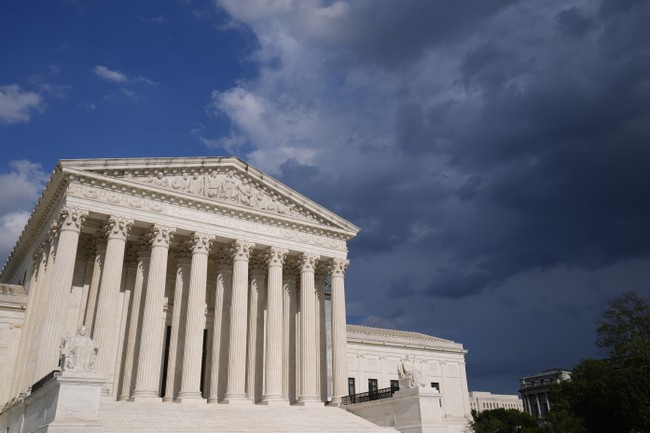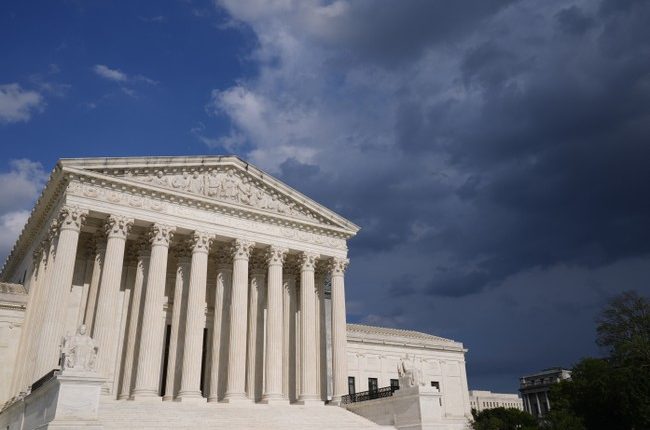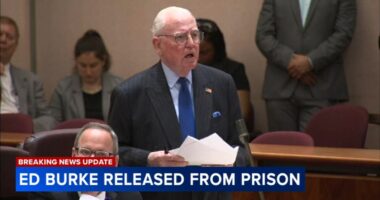
President Trump has been trying to reduce the size of the federal workforce since the early weeks of his administration. Those efforts have been repeatedly challenged in court. Today the Supreme Court issued an unsigned decision saying the planned layoffs could go ahead.
The Trump administration can move forward with plans to slash the federal work force and dismantle federal agencies, the Supreme Court announced on Tuesday. The decision could result in job losses for tens of thousands of employees at agencies including the Departments of Housing and Urban Development, State and Treasury.
Today’s decision overturns a lower court stay that had blocked the layoffs since May.
On May 9, Judge Susan Illston of the Federal District Court for the Northern District of California temporarily paused the administration’s plans for layoffs and program closures, preventing two dozen agencies from moving forward with the largest phase of the president’s efforts to shrink the federal work force.
Judge Illston initially issued a two-week pause. Later that month, she announced a longer-term block on the administration’s plan, which she said had created an urgent threat to critical services provided by the government.
She also said that such cuts were most likely illegal without approval from Congress. The judge concluded that the president cannot conduct large-scale reorganization of the executive branch without cooperation with Congress and following the process that the legislative branch has approved for government reorganization. She froze mass layoffs and agency closures as the lower-court case proceeded.
The government appealed but an appeals court upheld Judge Illston’s ruling. The government then made an emergency request for intervention from the Supreme Court. Here’s a bit of what solicitor general D. John Sauer argued in his filing:
In this case, the district court entered a nationwide injunction that bars nearly the entire Executive Branch—19 agencies, including 11 Cabinet departments—from implementing an Executive Order that directs agencies to prepare plans to execute lawful reductions in the size of the federal workforce. That injunction rests on the indefensible premise that the President needs explicit statutory authorization from Congress to exercise his core Article II authority to superintend the internal personnel decisions of the Executive Branch. But “[u]nder our Constitution, the ‘executive Power’—all of it—is ‘vested in a President,’ who must ‘take Care that the Laws be faithfully executed.’ ” Seila Law LLC v. Consumer Fin. Prot. Bureau, 591 U.S. 197, 203 (2020) (quoting U.S. Const. Art. II, § 1, Cl. 1; id. § 3). Controlling the personnel of federal agencies lies at the heartland of this authority. The Constitution does not erect a presumption against presidential control of agency staffing, and the President does not need special permission from Congress to exercise core Article II powers.
It took a couple of months but here we are. The brief order from the Justices was unsigned but Justice Jackson issued a dissent.
Under our Constitution, Congress has the power to establish administrative agencies and detail their functions. Thus, over the past century, Presidents who have attempted to reorganize the Federal Government have first obtained authorization from Congress to do so. The President sharply departed from that settled practice on February 11, 2025, however, by allegedly arrogating this power to himself. With no mention of congressional buy-in, the President’s Executive Order No. 14210 mandates a “critical transformation” of the Federal Government, to be accomplished by “eliminat[ing] or consolidat[ing]” existing agencies and ordering agency heads to “promptly undertake preparations to initiate large-scale reductions in force.”
This unilateral decision to “transfor[m]” the Federal Government was quickly challenged in federal court. As relevant here, the District Judge thoroughly examined the evidence, considered applicable law, and made a reasoned determination that Executive Branch officials should be enjoined from implementing the mandated restructuring until this legal challenge to the President’s authority to undertake such action could be litigated. But that temporary, practical, harm-reducing preservation of the status quo was no match for this Court’s demonstrated enthusiasm for greenlighting this President’s legally dubious actions in an emergency posture…
Given the fact-based nature of the issue in this case and the many serious harms that result from allowing the Pres-ident to dramatically reconfigure the Federal Government, it was eminently reasonable for the District Court to maintain the status quo while the courts evaluate the lawfulness of the President’s executive action. At bottom, this case is about whether that action amounts to a structural overhaul that usurps Congress’s policymaking prerogatives—and it is hard to imagine deciding that question in any meaningful way after those changes have happened. Yet, for some rea-son, this Court sees fit to step in now and release the Pres-ident’s wrecking ball at the outset of this litigation.
In my view, this decision is not only truly unfortunate but also hubristic and senseless.
However, Justice Sotomayor added a concurrence with the main opinion.
I agree with JUSTICE J ACKSON that the President can-not restructure federal agencies in a manner inconsistent with congressional mandates. See post, at 13. Here, how-ever, the relevant Executive Order directs agencies to plan reorganizations and reductions in force “consistent with applicable law,” App. to Application for Stay 2a, and the resulting joint memorandum from the Office of Management and Budget and Office of Personnel Management reiterates as much. The plans themselves are not before this Court, at this stage, and we thus have no occasion to consider whether they can and will be carried out consistent with the constraints of law. I join the Court’s stay because it leaves the District Court free to consider those questions in the first instance.
So there you have it. Justice Jackson is outraged that a lower court’s judgment is being questioned and Justice Sotomayor is saying she agrees with the majority that the request for a reduction in force is legal on its face and if it goes beyond that the courts can challenge it later.








